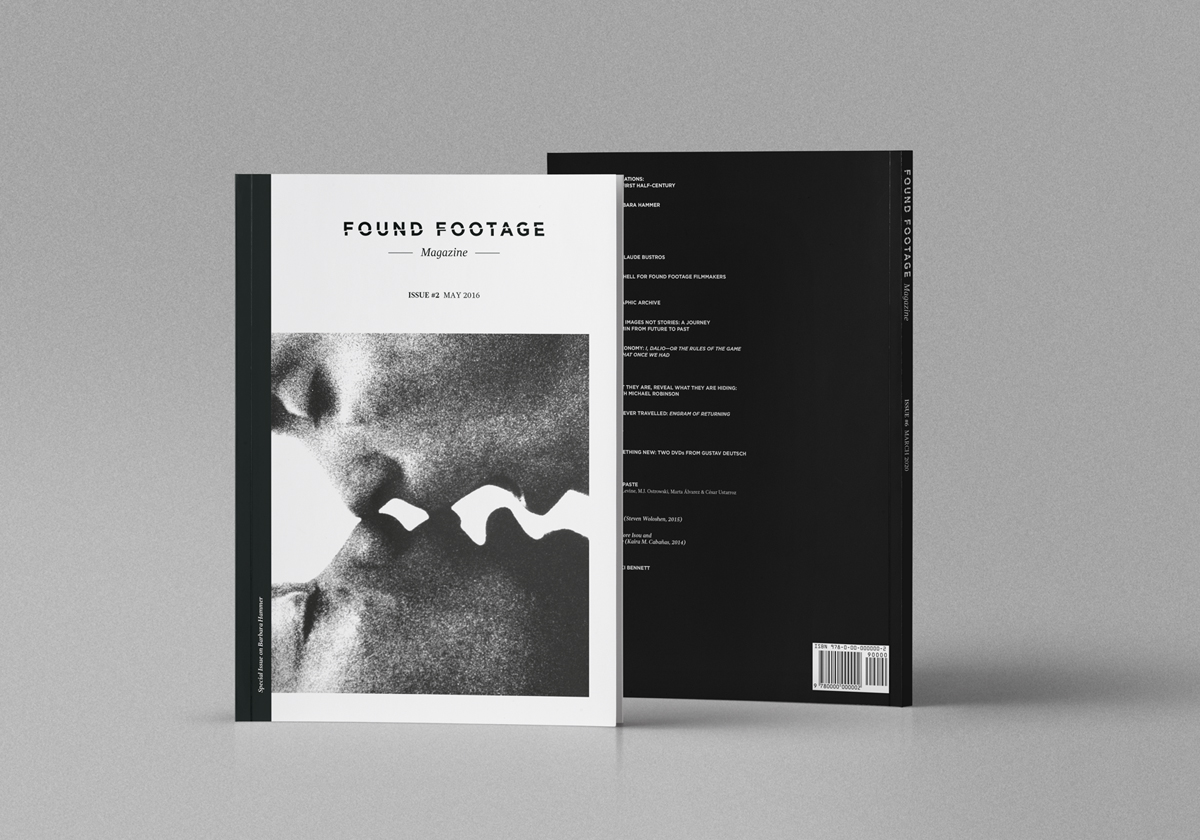Issue #2

Special on Barbara Hammer
+ Other contents
- May 2016
- ISSN: 2462-2885
- Full-color magazine
- English & Spanish
Audacious Appropriations: Barbara Hammer’s First Half-Century, by Greg Youmans
The scope, inventiveness, and audacity of Barbara Hammer’s career compel us to expand the frame from found footage to appropriation more broadly. Her appropriations of material from audiovisual archives (what is traditionally called found footage) came after and alongside more fundamental appropriations of various cinematic means of production, from film cameras and optical printing to a range of digital hardware and software, as well as the generic codes and practices of pornography and documentary. And these actions have in turn always been bound up with her appropriations of physical space: in film after film, Hammer wrests space (and time) away from heteropatriarchal coding and control.
Interview with Barbara Hammer, by Matthew Levine
Becoming Visible, by Abigail Child
Essays
- Two Films by Jean-Claude Bustros, by Dirk de Bruyn
Jean-Claude Bustros’ La queue tigrée d’un chat comme un pendentif de pare-brise (1983-1989) and Zéro Gravité (1990) mark an ethical endpoint of the scientific revolution so critical to growing up in the 60s and 70s, when the triumph of scientific thinking delivered both a trip to the moon and the atom bomb, all colonized and framed by an American voice and all part of the re-processed content available in these films.
- Copyright in a Nutshell for Found Footage Filmmakers, by Brian L. Frye
It can be difficult to determine whether found footage is protected by copyright, who owns the copyright, and whether particular uses of found footage infringe copyright, especially in the case of unpublished motion pictures. This article argues that copyright doctrine is unacceptably indeterminate and effectively restrictive in relation to the use of found footage.
- Images Beyond Time: Cinema as Photographic Archive, by Clint Enns
Cinema itself can be seen as a photographic archive. Nevertheless, viewing cinema simply as an ordered sequence of photographs removes one of the essential elements of cinema, namely, movement. Although something is lost in this reduction, it also provides another way of studying cinema, one that might provide valuable insight in terms of demystifying editing structures, composition, colour schemes, etc. In other words, they allow the spectator to view the film, the entire photographic database, as a single image.
- History Decays into Images not Stories: A Journey with Walter Benjamin from Future to Past, by Nazare Soares
When discussing the use of the archive in contemporary film practices, it is commonplace for the filmmaker to be assigned many roles; as historian, archaeologist, anthropologist, historical novelist, journalist… The reality is that when dealing with archive material, the moving image artist fulfills many, if not all, of these roles and must show the capacity to shift between them. The thoughts and works of Walter Benjamin offer interesting perspectives for filmmakers when dealing with the trace of history in their work. He develops methodologies that enable artists to understand their multiple functions and roles as collectors and allegorists.
- Indexing versus Taxonomy: I, Dalio—or The Rules of the Game and The Thoughts That Once We Had, by Jonathan Rosenbaum
The rapidly and constantly expanding proliferation of films and videos about cinema is altering some of our notions about film history in at least two significant ways. For one thing, now that it has become impossible for any individual to keep abreast of all this work, our methodologies for assessing it as a whole have to be expanded and further developed. And secondly, insofar as one way of defining work in cinematic form and style that is truly groundbreaking is to single out work that defines new areas of content, the search for such work is one of the methodologies that might be most useful.
ARTICLES & INTERVIEWS
- View them for what they are, reveal what they are hiding: A Conversation with Michael Robinson, by Alejandro Bachmann
- Somewhere I have never travelled: Engram of Returning, by André Habib
- The Last Broadcast, by Peter Snowdon
- Something Old, Something New—two DVDs from Gustav Deutsch, by Scott MacDonald
FILM REVIEWS: CUT‘N’PASTE, by Albert Alcoz, Matthew Levine, Mark J. Ostrowski, Marta Álvarez and César Ustarroz
- Standby for Tape Back-Up, by Ross Sutherland, 2015
- Wild Currents, by Stephen Broomer, 2014
- The Great Flight, by Carolina Astudillo, 2014
- By the Time We Got to Expo, by Eva Kolcze & Philip Hoffman, 2015
- Parallax Paradox, by Joan Leandre, 2009-2014
- Cut Out, by Guli Silberstein, 2014
- The Tin Hat, by Giuseppe Boccassini, 2014
- Miss Cinema – Archivio Mossina, by Paolo Simoni, Rinaldo Censi, Ilaria Ferretti & Mirco Santi / Home Movies Italy, 2015
- (Self) exhibitions, by Florencia Aliberti, 2012-2015
- A Film Remembered, by Andrés Duque, 2015
- Second Sighted, by Deborah Stratman, 2014
BOOK REVIEWS
· Scratch, Crackle & Pop!, by Albert Alcoz
· Off-Screen Cinema: Isidore Isou and the Lettrist Avant-garde, by James Luce
INTERVIEW WITH VICKI BENNETT, by Kenneth Goldsmith
Artworks
by Phil Solomon, Jennifer West, Dan Browne, Pedro Ferreira, Robert Lyons, Schmelzdahin, Ian Helliwell, Peggy Ahwesh, Mark Street.